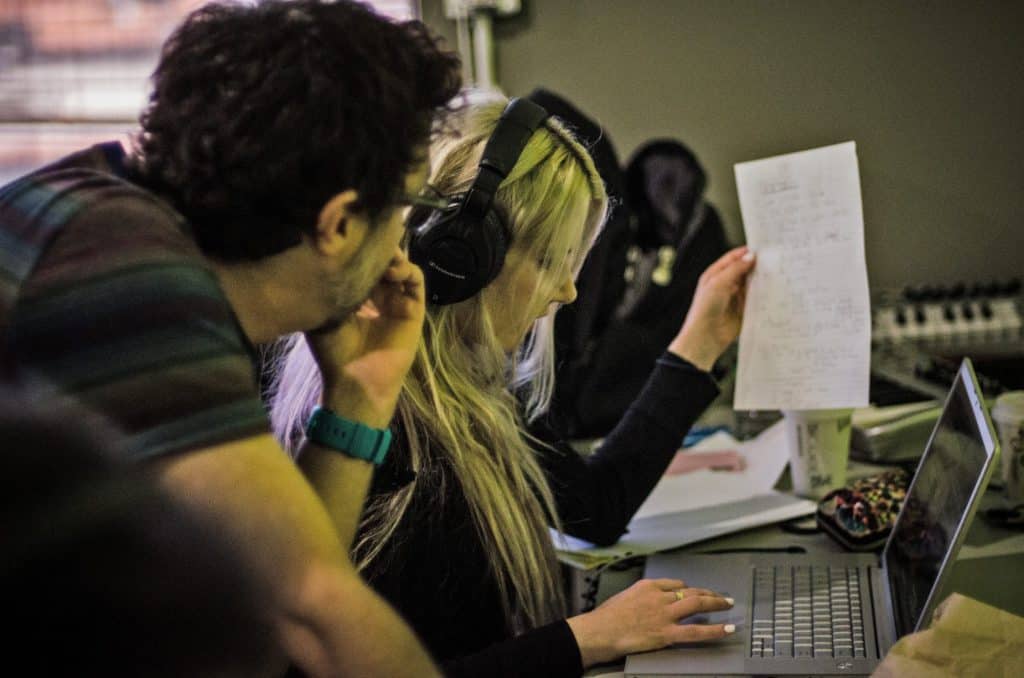How to Record Vocals When Producing A Singer – Vocal Production
How to Record Vocals When Producing A Singer – Vocal Production
By Chris Porter
Firstly, let’s explode the myth that vocals are anything other than another instrument, or colour (depending on how you like to view things!) that you use to build up a musical picture.
Yes, they convey language as well as melody, rhythm and texture, but that’s more to do with interpretation of material as it is to do with how to produce vocals. More on that in a bit.
To begin, you should accept that whatever vocalist you are working with has brought their instrument with them – in the form of their voice. If they naturally sing like Bryan Adams or Tina Turner, then you’ll have to accept that natural gravel in their vocal. Your first port of call, therefore, should be to make a judgement call about whether or not the material they have chosen to record is appropriate for their natural talents. If it isn’t, then it’s going to be your job to point this out.
However, we are only dealing with opinion here – if you like the idea of a stylistic mismatch between vocal and material, then that’s your decision to make as producer.
And that’s the whole point of any interpretation of producing music – any creative decision that you make around this is just that – your decision. There are not necessarily right or wrong decisions – but these are some of the things you may want to consider when learning how to record vocals when producing a singer.
- It makes sense to capture your recordings in as pure an environment as possible. In an ideal world, you get the vocalist to use a sound booth. But a lot of artists like to stay in the control room and feel connected to the engineer, producer or their band mates – and psychologically, that can make a big difference to recordings. It’s as important for them to deliver a ‘vibey’ performance as it is to be a thoroughly clean signal that’s captured.
- A good engineer/producer will be well-versed in microphone options. Try a few and see what qualities of your vocalist’s voice are augmented or reduced by using different ones.
- Pander to your vocalist’s requirements (within reason). Vocals and their lyrics are often very personal to singers – it’s important that they feel comfortable when performing them. If they want the lights dimmed, or less people around, see if you can arrange that…
- Do your homework – listen to the vocalist in advance. If you have a good feel for their vocal style, it will help you direct them through vocal takes, allowing you to get the very best out of them. Find out what the song is about so that you can place emphasis on the important parts.
- Remember dynamics. A song has to breathe – the vocals shouldn’t necessarily all be delivered at 100 miles an hour… Make a little ‘journey plan’ for your vocalist’s vocal to stick to.
- No one can see the artist in the studio. Singing with a false smile on your face creates a warmth to the vocal take that can be a really welcome addition to the vocal sound captured. Singing with teeth clenched and bared creates a tension to the takes. There are some producers who request that vocalists adopt strange postures when they sing to alter the sound that their bodies make… but if it gets the desired effects, these techniques are definitely worth exploring. Build rapport and trust with your singer and they will try the things you ask of them.
- How you capture vocals is up to you. There are really NO RULES to vocal production. The only limit to it is your imagination.
When you have ‘comp-ed’ the vocal takes you need, you can really go to town. Because manipulation of sound files is now such a hugely inventive area, there are all sorts of compression, effects, EQ and gates and so on that you can easily apply to the files.
Lots of software exists that allows you to manipulate sound like never before. (You can still use hardware of course, but software lets you experiment and hear options FAST!). Check out Vocalign and Melodyne. Create vocal chains that only you could ever think of – just to see what they sound like. For example, it’s often an accepted practice to compress a vocal before you affect it. What happens if you put reverb on a vocal and THEN compress it?
Have you ever put a vocal through a guitar amp simulator? You really should!
I haven’t even touched on things like double-tracking, panning, backing vocals, singing in octaves, microphone technique, gang vocals or indeed many, many other factors here. There is so much to consider.
But one rule should dominate all others: most listeners look to the vocal to deliver the song’s message. Make sure the vocal you produce COMMUNICATES the song’s message effectively. All the rest is just window-dressing. It can be lovely, but it’s just window-dressing.
Get more on How to Record Vocals When Producing A Singer & Vocal Production tips on our Hit Songwriting and production courses in New York, and worldwide.


